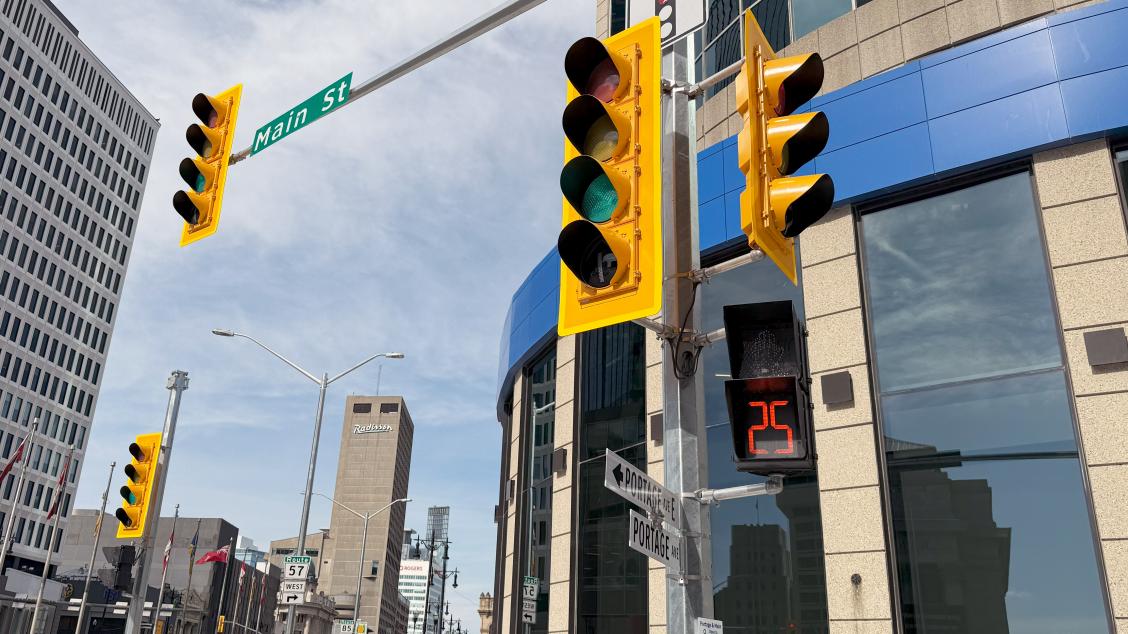
Pedestrians are crossing Portage Avenue and Main Street at street-level for the first time since 1979. This significant change means pedestrians and drivers need to pay extra attention when navigating the intersection.
We want to make sure everyone gets to where they’re going safely.
What pedestrians will experience
There are now accessible curb ramps where the barricades once stood. The sidewalk was designed in a way that guides people to where they need to cross.
People should only cross when the accessible pedestrian signals indicate crossing is safe. In addition to displaying the walk sign, these signals play non-visual audible tones. They will help people with visual impairments know when to cross.
The signals also will display a pedestrian countdown timer. This indicates how much time is left before the lights change to don’t walk. People should only enter the intersection if they have enough time to cross.
Pedestrians will also get a five-second head start to enter the intersection before vehicles get a green light. This is called a leading pedestrian interval. These are in place throughout Downtown.
What drivers will experience
When driving through Portage and Main, make sure watch for pedestrians. Drivers turning right must give pedestrians the right of way.
Vehicles traveling north won’t be able to make a right turn from Main Street onto Portage Avenue East. This change gives people on the sidewalk more room and improves safety.
There are now three left-turn lanes going from Portage Avenue on to northbound Main Street. One lane continues straight on to Portage Avenue East. There is now only one right-turn lane onto southbound Main Street.
With the launch of the Primary Transit Network, new transit stops have been added near the intersection. This means drivers should expect to see more buses travelling through the area.
The reopening follows the Council-approved recommended design vision for the intersection.


